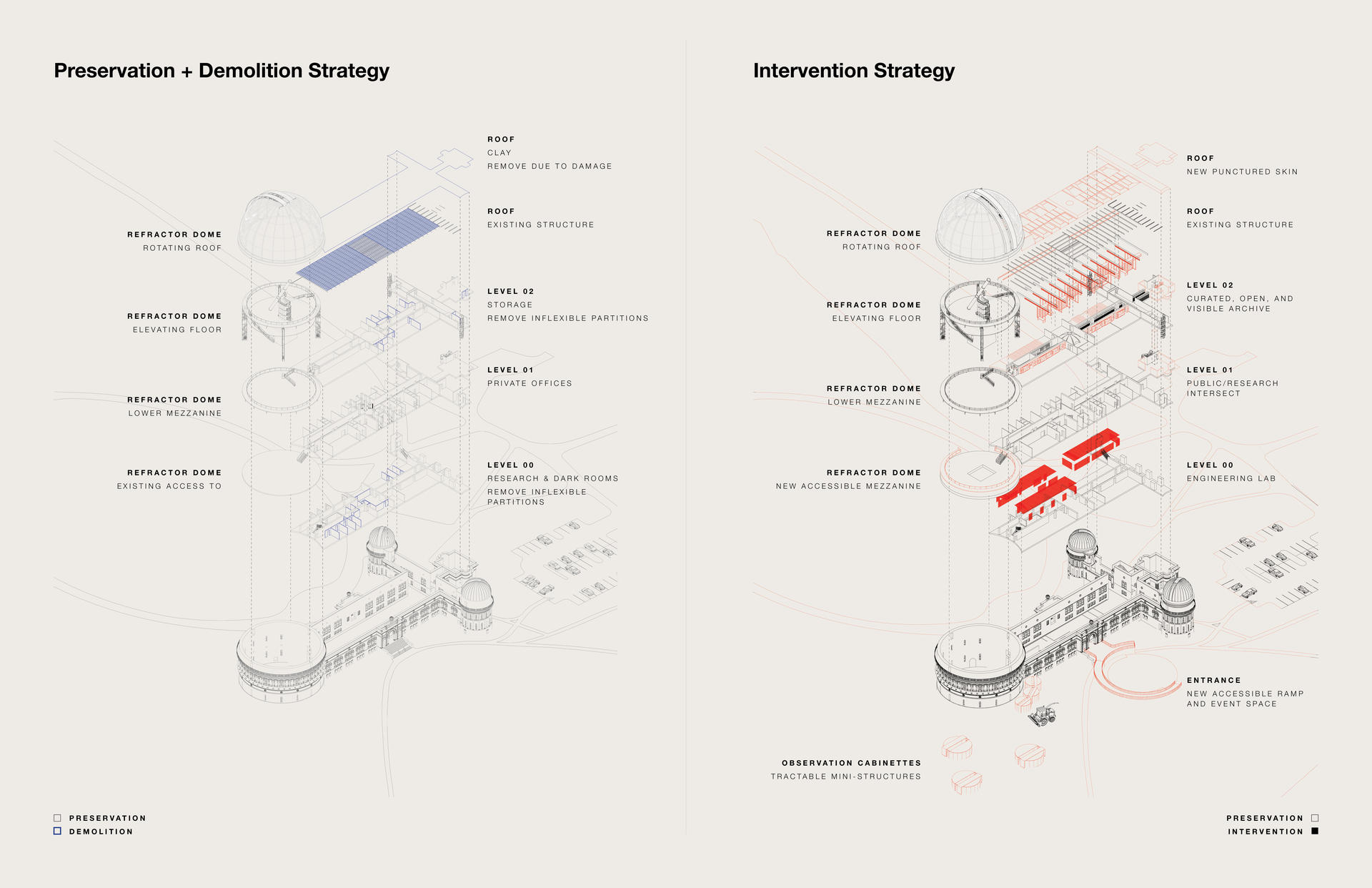ABSTRACT
With the constantly evolving initiatives of astronomical exploration comes the obsolescence of instruments conceived to support research; a sure sign of the scientific process. However, architecture constructed to shelter these constantly shifting tools often remains fixed, growing incapable of supporting advancing technology. Typically, these shelters are sidelined in favor of new infrastructure. Many optical observatories around the world face this issue and must choose between preserving the past or abandoning the site altogether. That these buildings are no longer needed for revolutionary research shouldn’t be disappointing: it is a signal of human achievement, and the scientific process requires a more deliberate model for architectural response that celebrates the need for adaptive reuse as a direct result of new knowledge.
Paradigm shifts in scientific thought can result in obsolete built infrastructure, which is often discarded and replaced — one form of adaptation. Some architects anticipate this need for change and design deliberate frameworks that are flexible enough to accommodate both permanence and transience — another form of adaptation. However, optical observatories are usually driven by a specific need to shelter massive telescopes, a type of instrument so large it is married to the architecture itself, creating a mixed circumstance between permanence and flexibility.
One such site, the Yerkes Observatory, has been referred to as “the birthplace of modern astrophysics” since its establishment in 1897. However, as of 2018, the University of Chicago no longer has a need for its once revolutionary technology. The transformation of the Yerkes Observatory contributes to the growing field of adaptive reuse, but the implications of this intervention stretch far beyond a single project, providing a model for how other iconic structures can evolve. The intervention design is organized into three main components. First, celebrating the site’s revolutionary past through archival storytelling. Second, connecting to the present by mediating between the local community context and scientific literacy. Third, preparing for the future by assembling architecture as a flexible educational tool.
The Great 40" Refractor Telescope
In 1892, George Ellery Hale, a University of Chicago professor, learned of two optical glass disks that were not being used, and knew that they could be obtained to build the largest refracting telescope in the world, 40 inches in diameter. This was an expensive endeavor, so like most astronomers hoping to build a new observatory or instrument during this era, he sought funding in the form of private donations. After convincing Charles T. Yerkes, a wealthy Chicago businessman, to help him build “the best research institution in the world,” he began to look for a site.1
Since observatories and their optical instruments are most functional when located far from other buildings and urban light pollution, small towns in the Midwest area competed to be the home of the ‘great refractor’. Many offered to donate the land, hoping to inherit a nearby monument of exploration. When Hale visited the Williams Bay on Geneva Lake in southern Wisconsin, he decided it would be the perfect location, 90 miles from the University of Chicago campus.1
The new telescope was debuted at the 1893 World’s Columbian Exposition in Chicago while the observatory was still in the architectural planning phase. Henry Ives Cobb, a well-known Chicago architect, was chosen as the builder. Since Hale had recently visited observatories around the world, he already knew how he wanted to design the structure. Though he gained a basic understanding of observatory configuration during his travels, he wanted to include one major thing that had never been done before, which would quickly make Yerkes a precedent for other observatories.1 The major innovation was to include a large metals fabrication shop, laboratories, and plenty of extra space within the observatory structure itself to avoid having to both outsource labor and build additional space in the future. This allowed the astronomers to use the structure as a machine: fabrication and processing in the basement, private offices on the first floor, and open space for spatial alterations on the second floor. In the words of Rich Kron, a professor at the University of Chicago and prior director of Yerkes, “the observatory has reinvented itself many times.” Astronomers used the structure as their platform; whether it was the engineered rotating domes, or the unplanned addition of interior partitions, adaptation to current research needs quickly became a philosophy at Yerkes.
Construction on the observatory began in 1895, and was completed in 1897. Aesthetically, the observatory was designed with a Beaux-Arts style, with the exterior facade and elevated entrance as the most articulated components. The façade is highly ornamented with motifs, human figures, and mythological references. The tympanum in the arch above the entrance lintel shows the Sun God taken from the Temple of Apollo.2 The dome housing the large refractor is 90 feet in diameter, and rotates 360 degrees to accommodate the necessary telescope positioning. The wooden floor that surrounds the telescope is a massive operating elevator, which can be lowered or raised depending on relevant optical requirements.1 The telescope itself is still the largest operating refractor telescope in the world, with the main lens at 40 inches in diameter, and overall tube length of 60 feet.1
Image
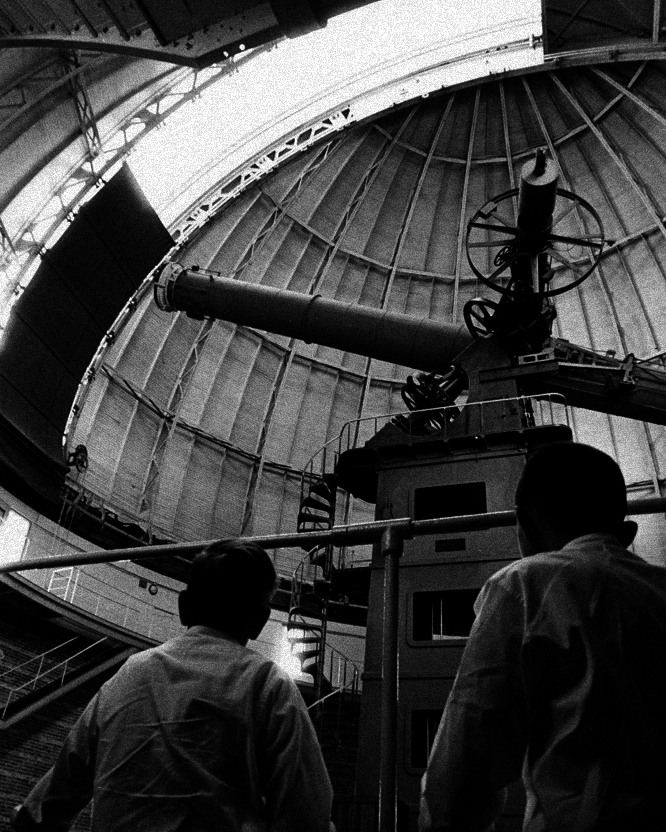
Image

Image
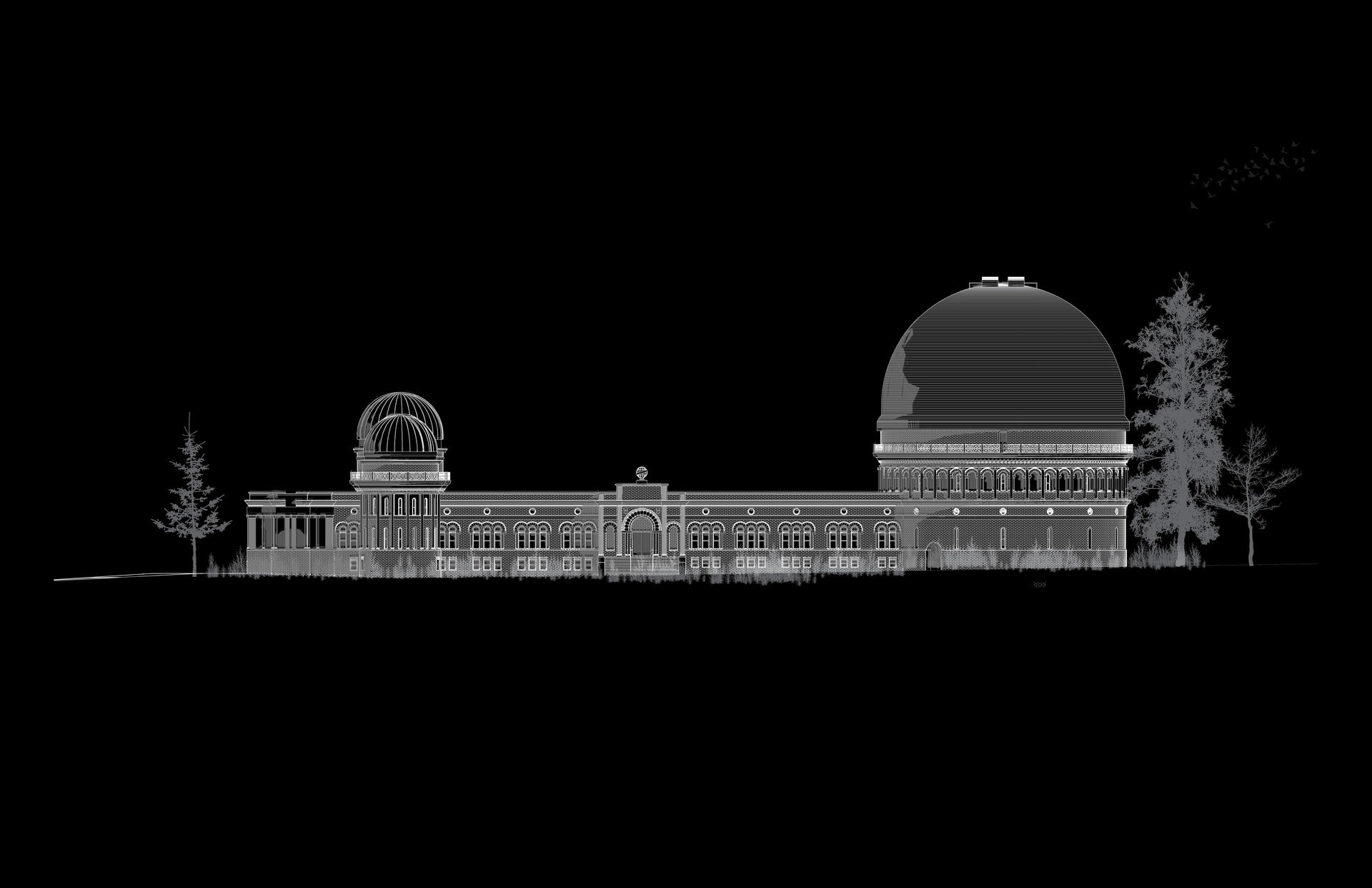
Image
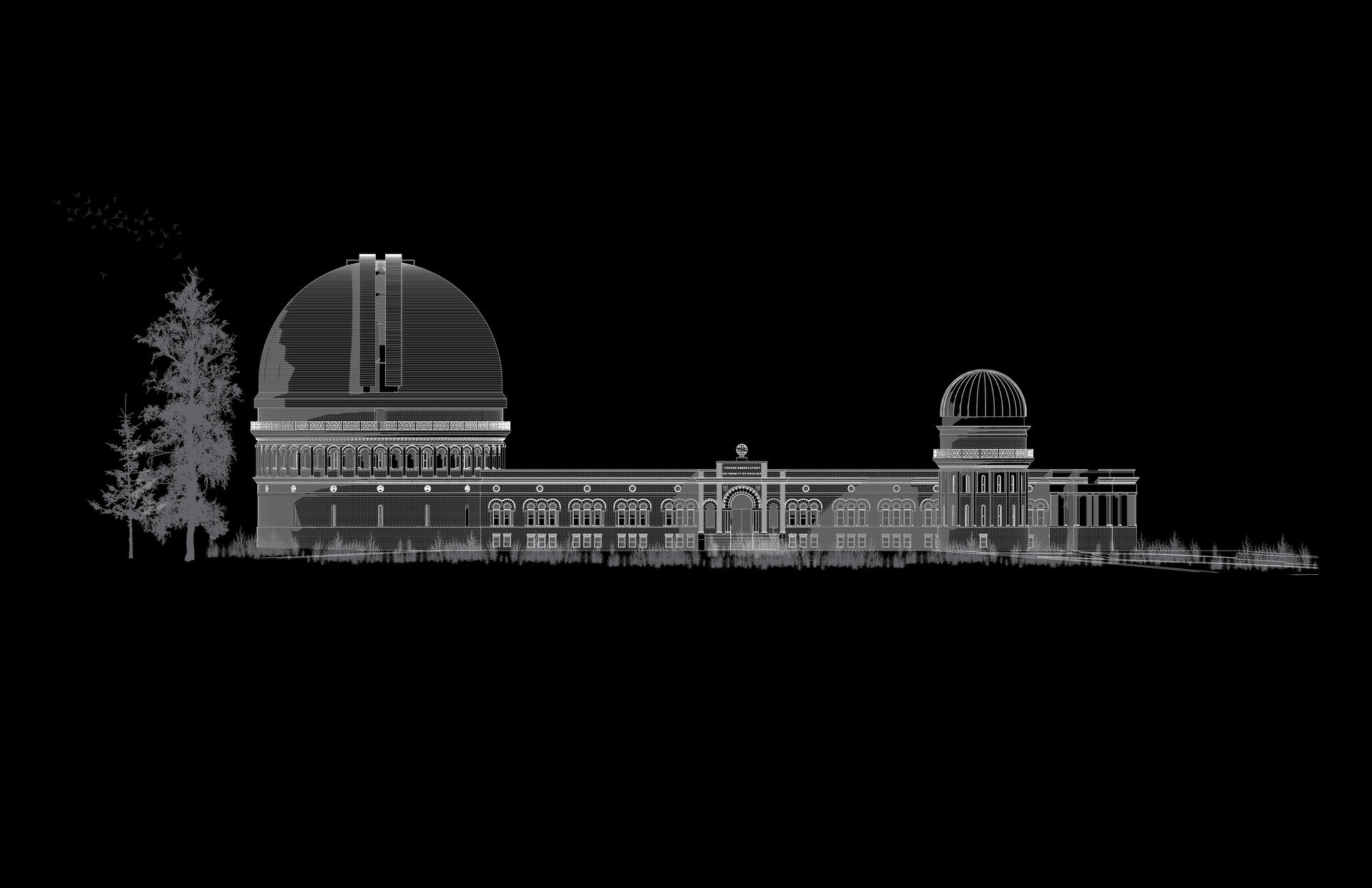
Image
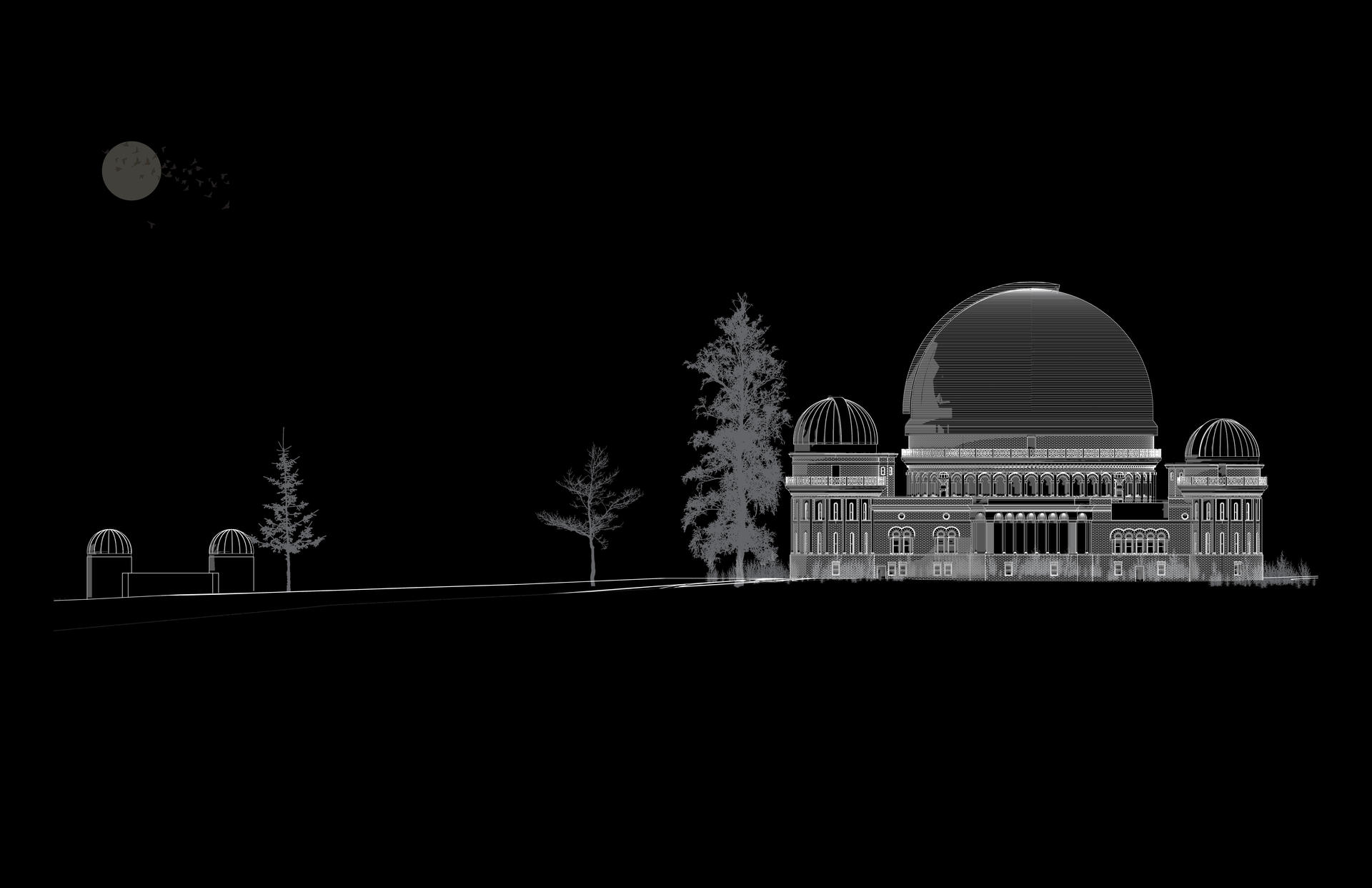
Image
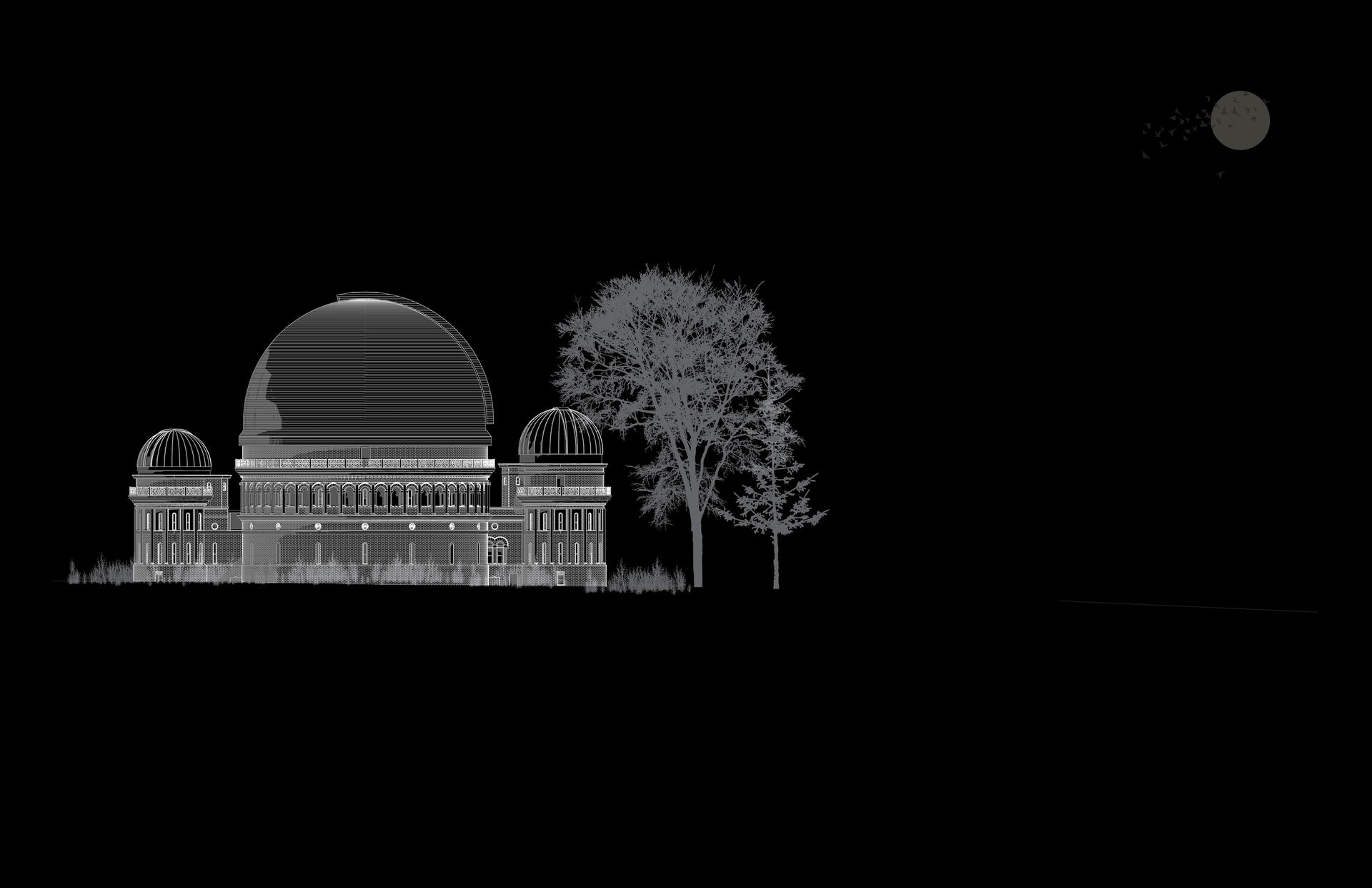
Image
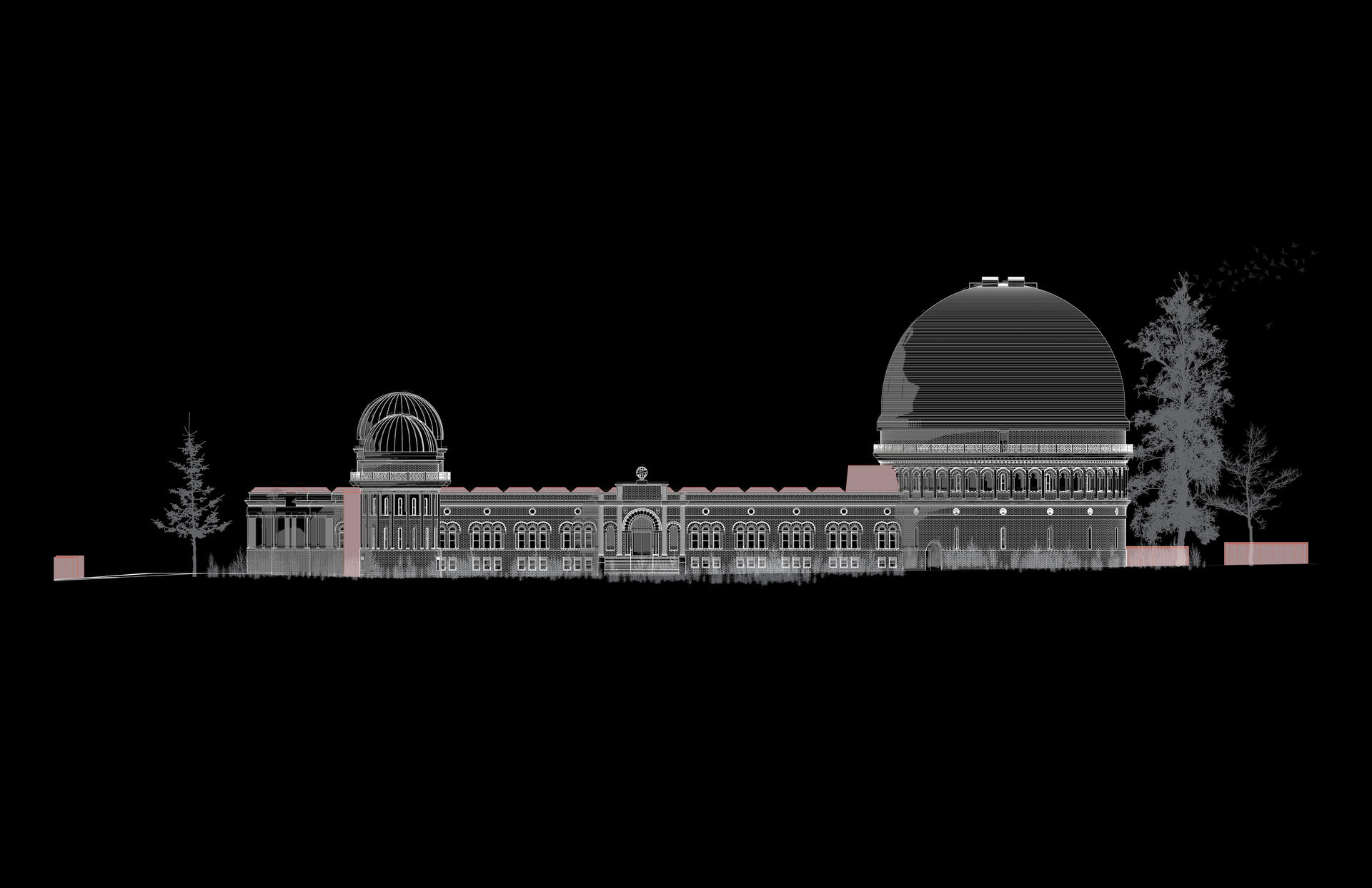
Image
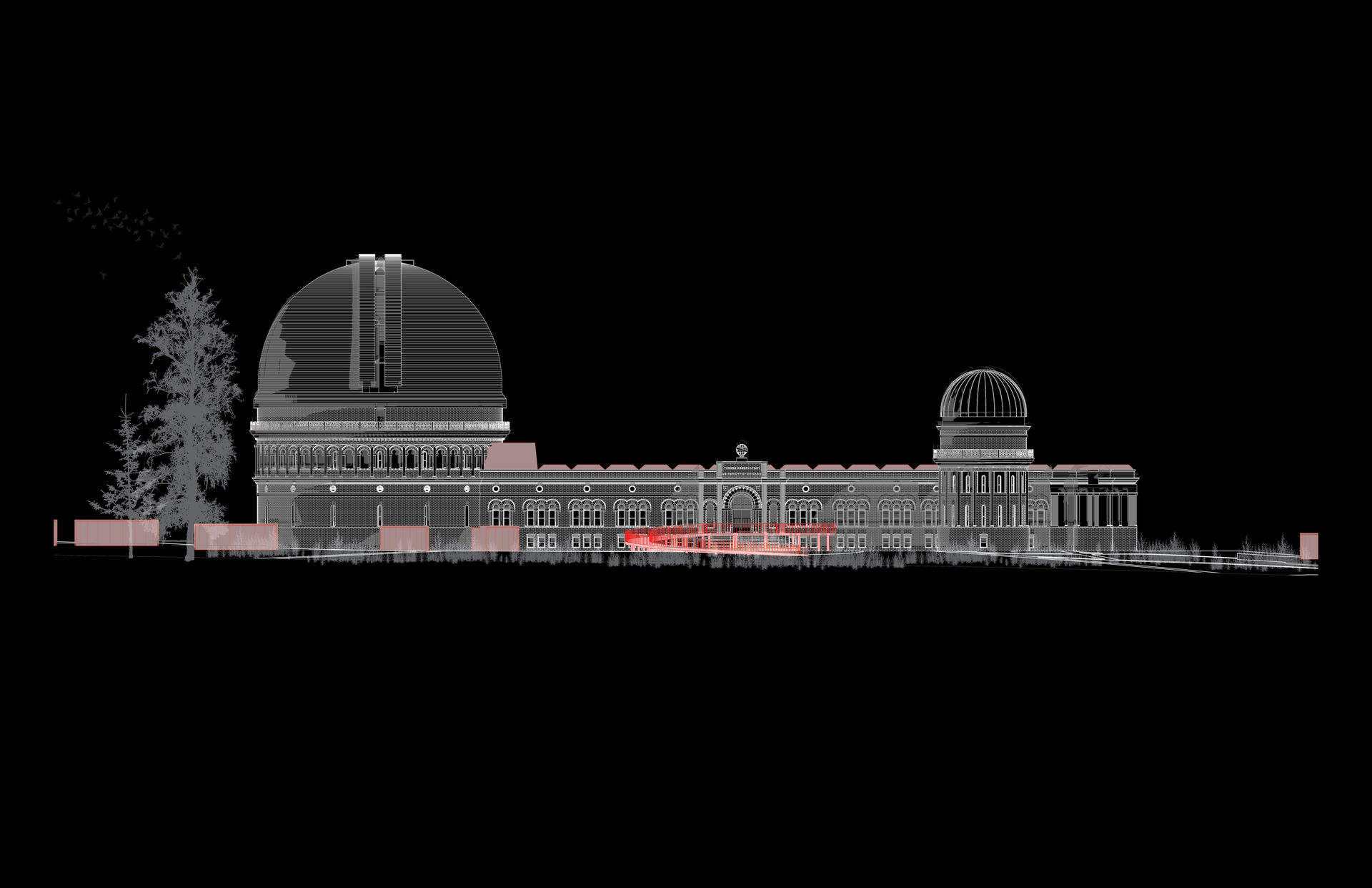
Image
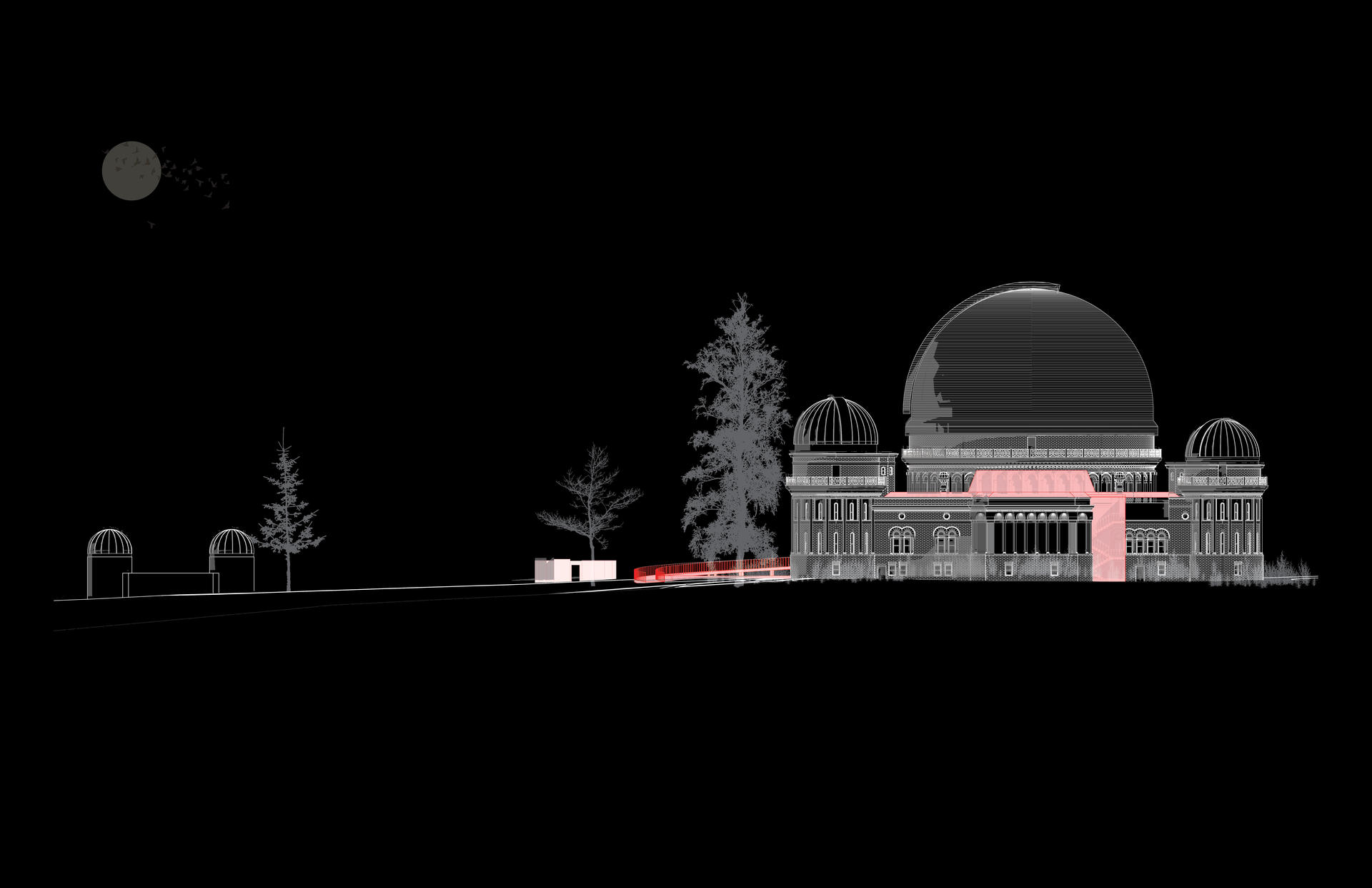
Image

Image
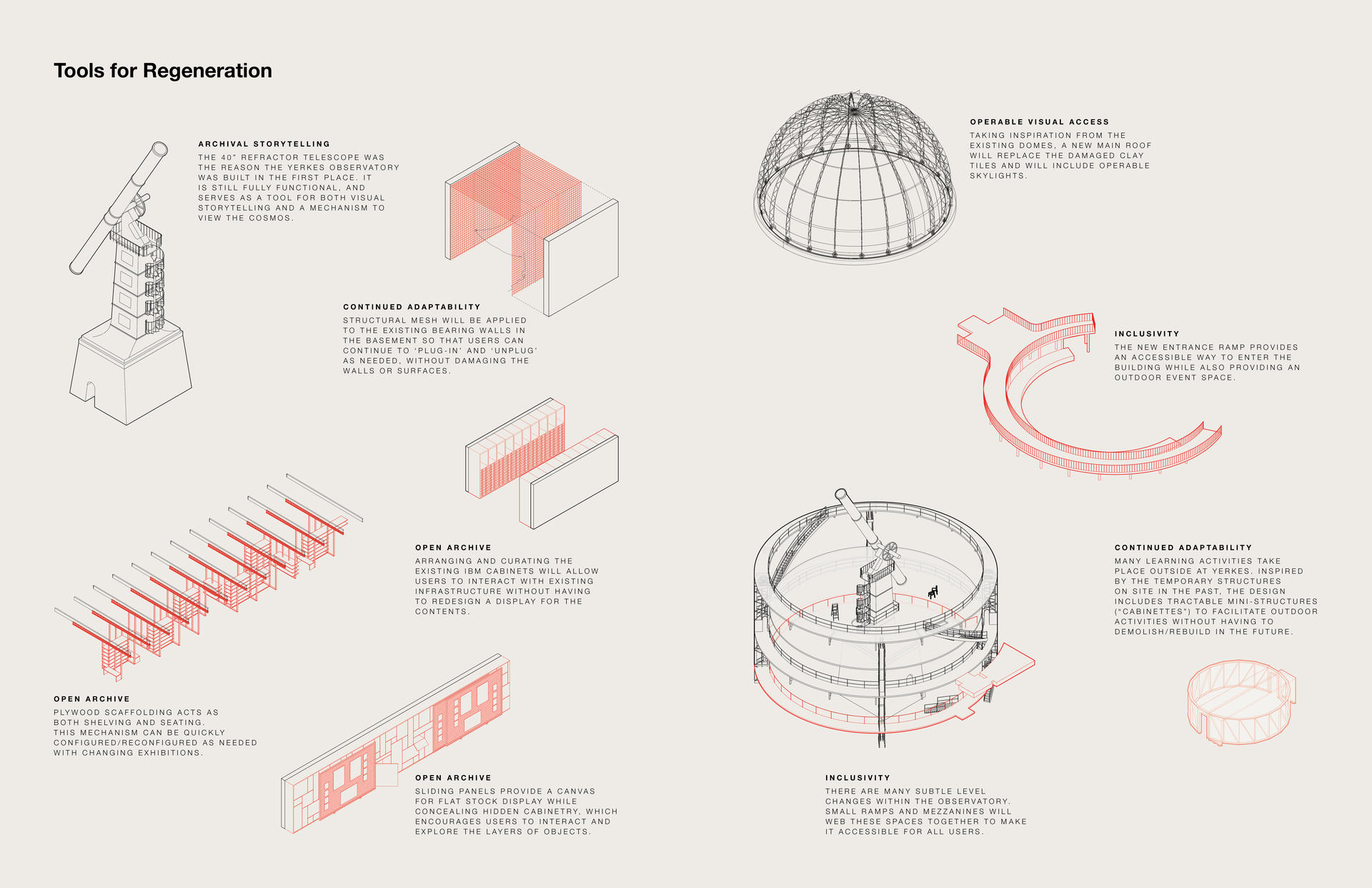
Image
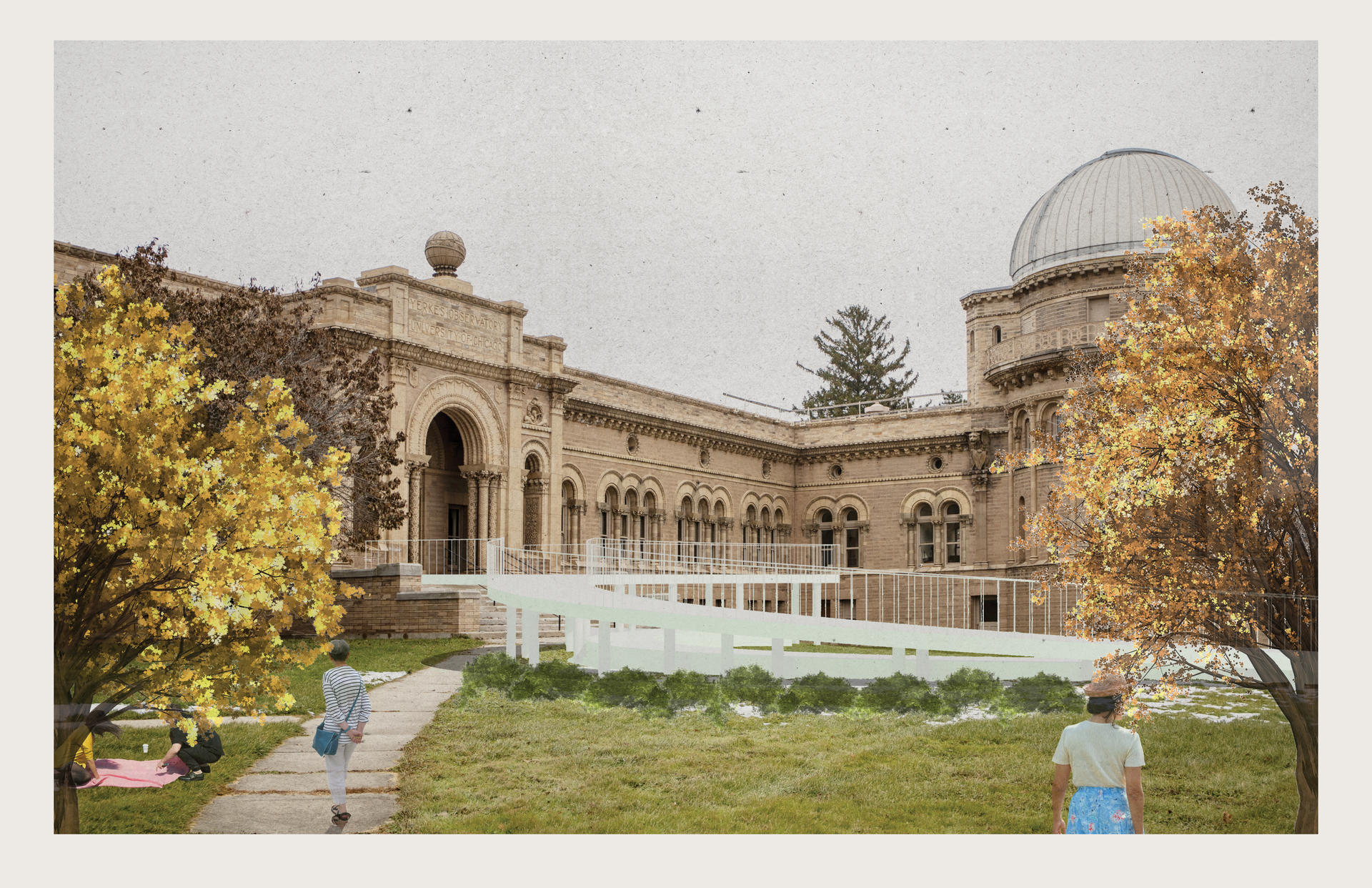
Image
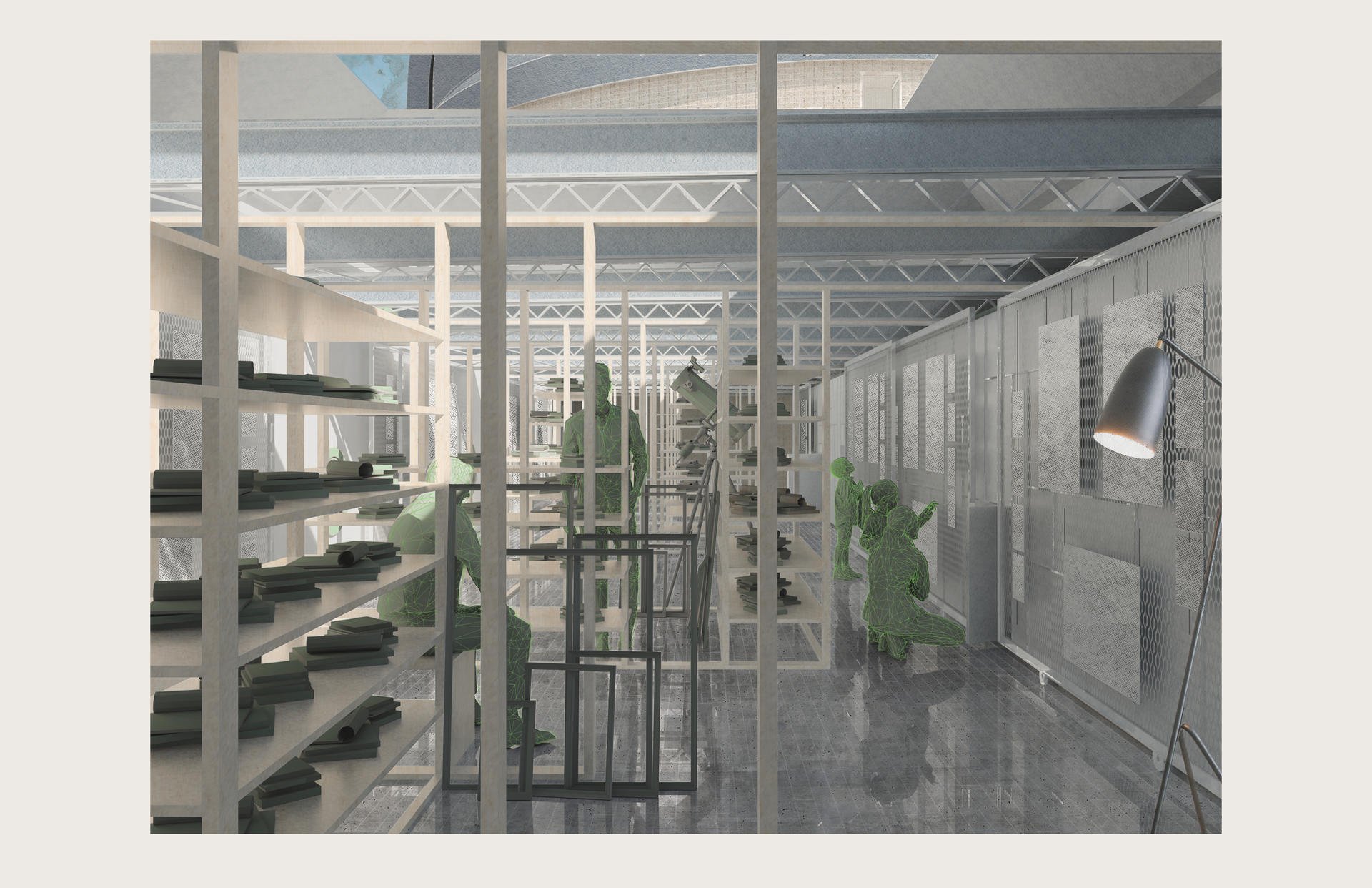
Image
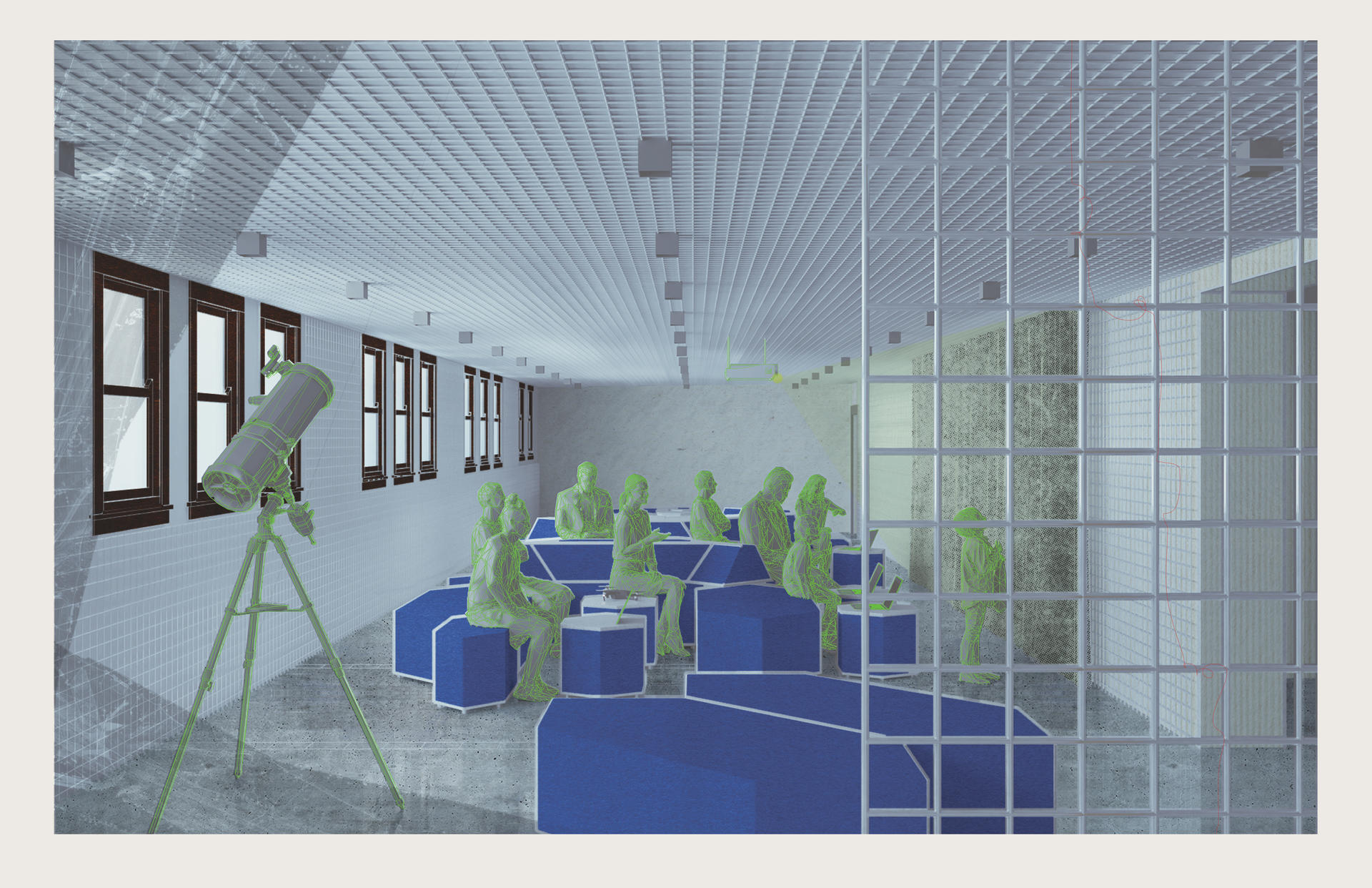
Image
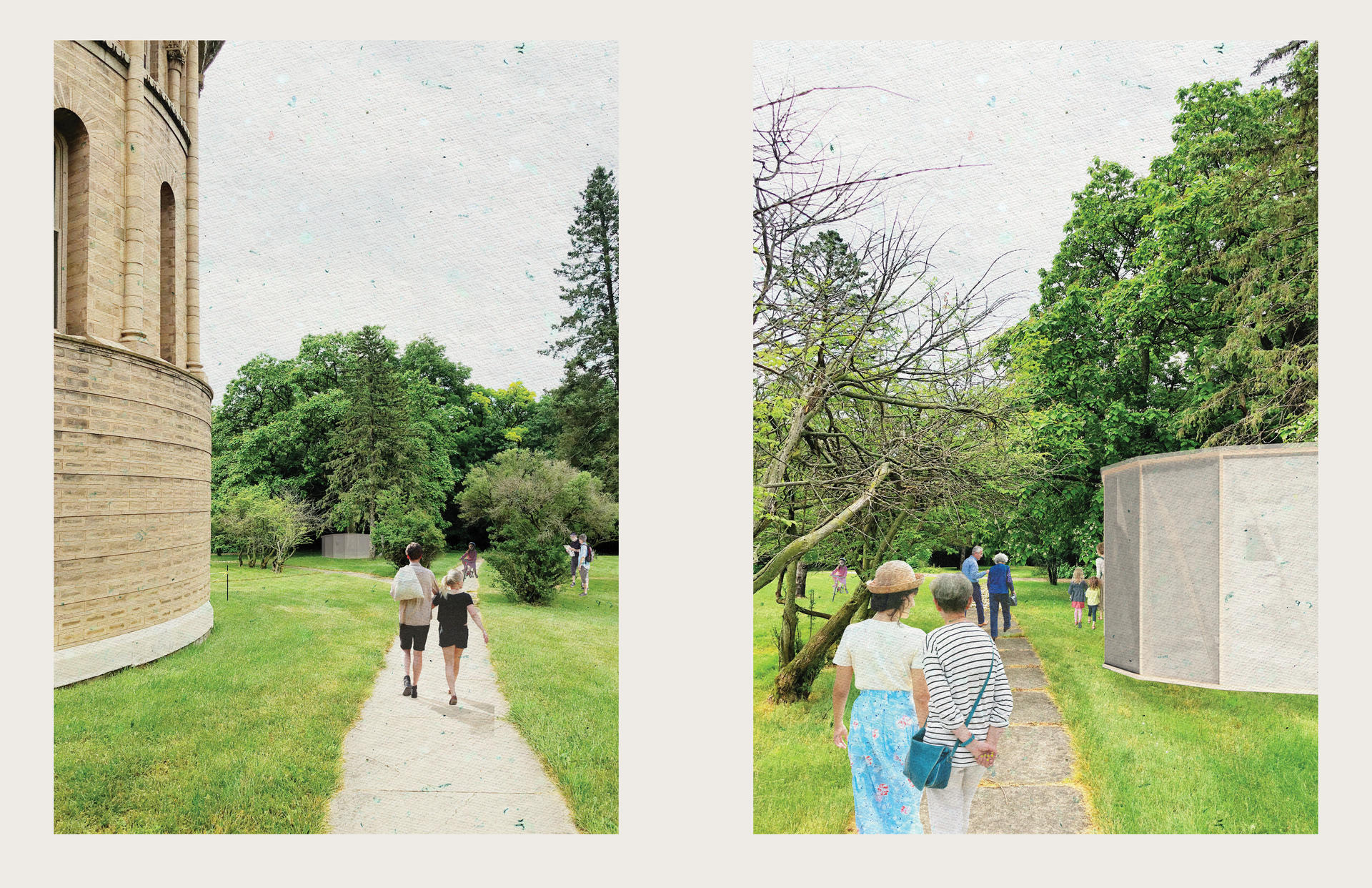
Image
